If you are looking for an affordable and practical flooring for commercial locations, vinyl flooring is definitely an option you’d want to look into. This is a durable and easy to install synthetic flooring material. However, not all vinyl flooring is created equal.
The two standard forms vinyl flooring is available in are vinyl sheet and vinyl tiles. Vinyl sheet and vinyl tiles share many of the same advantages, but they have certain differences as well. And depending on the type of business or organization you’re running, you may find one better than the other. That being said, let’s how both compare so that you can purchase the right vinyl commercial flooring.
Appearance
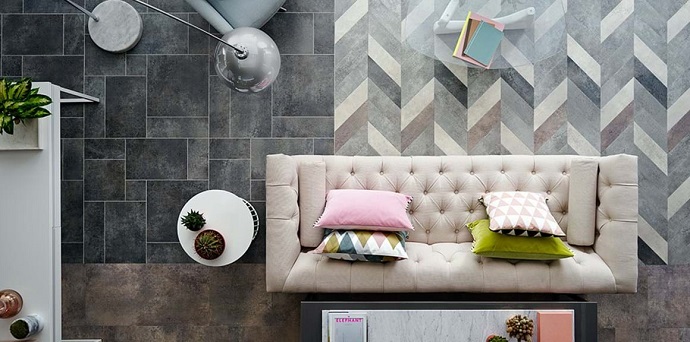
One of the major reasons why vinyl is a preferred type for commercial flooring is that it can be printed to look like a great number of different materials. Hence, we have vinyl flooring that looks like hardwood, natural stone, and ceramic tile. When it comes to diversity in design choices, sheet vinyl is superior. Sheet vinyl is available in a variety of patterns, allowing you to create a tailored look for your floors. However, the one thing vinyl tile is more successful in is mimicking stone and ceramic tile since it has seams between the pieces.
Durability and Stability
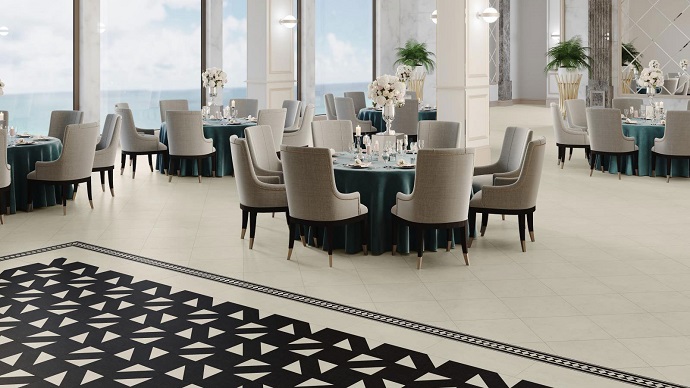
When talking about durability, we are actually referring to the hardness of the flooring, especially the topmost wear layer. Stability, on the other hand, is governed by the thickness, i.e. the construction of the layers and quality of the materials. When it comes to commercial flooring that takes a lot of beating in heavy-duty environments such as warehouses, for example, vinyl tiles are more durable and stable in comparison to vinyl sheets.
However, when there is high traffic, damages are inevitable. Hence, if your commercial vinyl flooring is damaged, it is much easier to replace vinyl tile than the sheet. You can cut out and replace a small section of sheet vinyl, but it will always be pretty noticeable. What can help here is cutting out the patch along existing pattern lines, but this, in turn, is a pretty difficult skill to master. On the other hand, with vinyl tiles, you can easily remove and replace individual tiles. If you replace the tile properly and carefully, the repair will be invisibly integrated into the rest of the floor. This is what makes vinyl tiles the preferred option for busy commercial spaces, like for instance stores, restaurants and similar high-traffic businesses.
Care and Cleaning
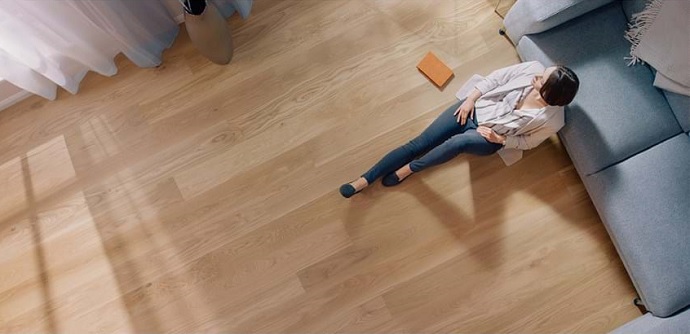
How do you maintain vinyl flooring? Both sheet vinyl and vinyl tile are among the easiest of all flooring materials to clean. They can be easily maintained by simple daily sweeping and occasional damp mopping with a mild detergent. This is why they’re a common option in kitchens and bathrooms.
Aside from the usual quick sweep and mop clean routine, you can occasionally deep clean if you want your floors to look like new again. For instance, it’s not rare to have tough stains of gum when it comes to vinyl commercial flooring. In order to remove them without damaging the floor, you can use a putty knife which is a great tool for scraping up gum or paint. Also, a baking soda paste (baking soda + water) works miracles for lipstick, ink, tomato sauce, grape juice, etc. Apply the baking soda paste and then simply rug with a soft rag until you completely remove the stains.
Installation
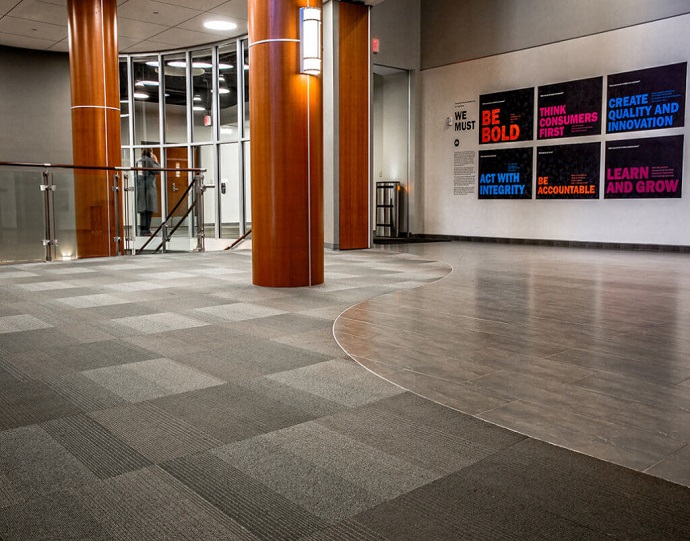
Vinyl sheet is usually applied with a glue-down application. This is a very specific method when it comes to vinyl sheets, and some special techniques are required to join the seams where two pieces of vinyl meet. Even though many DIYers sometimes attempt to install sheet vinyl, they wish they had not tried it at all later. All in all, the professional installation of sheet vinyl is quite affordable, and going the pro route simply makes more sense.
Commercial tile, on the other hand, is much easier to install. It can usually be done by a moderately skilled amateur and once the field is installed, it’s a pretty easy matter to hand-cut the perimeter tiles in order to meet the contours of the room. However, there are also many products that use a peel- and stick- method, when the adhesive is pre-applied and protected with a backing sheet that should be just peeled away when the time for installation comes.
Water and Heat Resistance
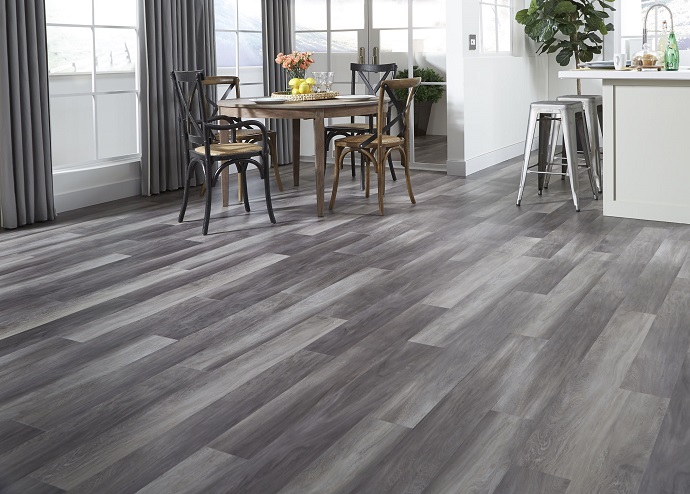
Sheet vinyl provides a much better barrier against moisture and this is the reason why it is very useful for spaces exposed to water or moisture. You just have to make sure that the material is secure at the room edges and that the adjoining pieces are bonded. Vinyl tile is itself impervious to water, however, here we have many seams and cracks through which moisture can seep down. That’s why vinyl sheet is considered to have better water resistance. When it comes to heat damages, both sheet and tile can be damaged by the heat of cigarettes, hot pans, or some heating appliances. High heat can melt the surface and leave a disfiguring burn mark.
Cost
One of the reasons why sheet vinyl is mass-produced in huge rolls is the fact that it is one of the cheapest of all flooring materials. Home improvement centers usually sell it for $.50 to $1.50 per square foot. The peel- and stick- tile, on the other hand, usually sells for o$1.50 to $3 per square foot.




















